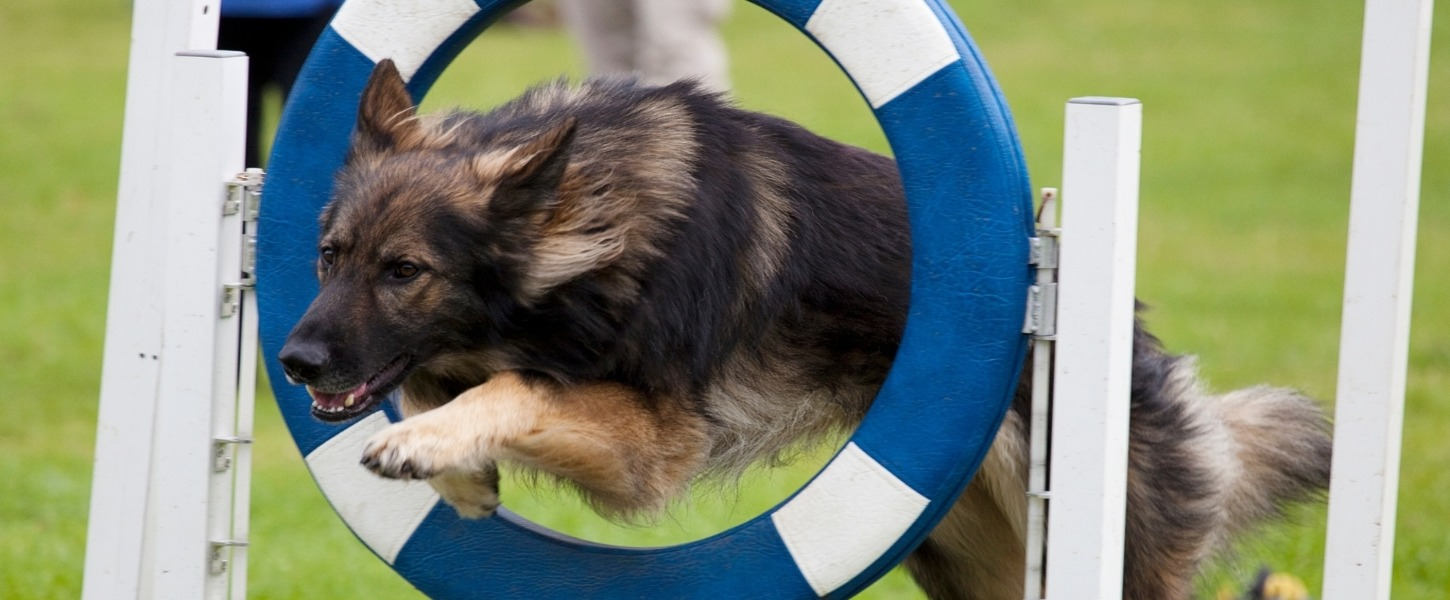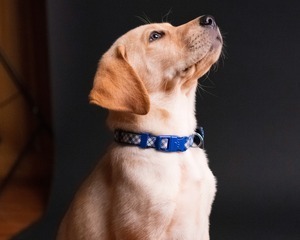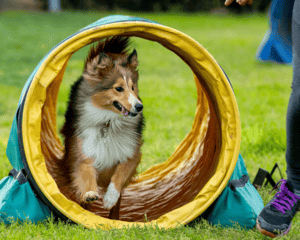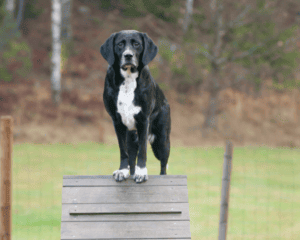The Benefits of Dog Agility and How to Get Started in the Sport
September 16, 2024 | By David Jackson
Not only can dog agility training be a great way to exercise your dog, both mentally and physically, but it can also be an enjoyable bonding experience between you and your four legged friend. So, what does agility training actually involve?

In short, it`s a dog obstacle course. But rather than letting your dog run riot around various obstacles and equipment, you spend time directing your dog through the course, helping them navigate each hurdle they come across.
Over time as your dog gains confidence and their skills develop you will aim to get faster and you may even want to enter yourselves into agility competitions. And although many may see agility training as something that is more popular with younger, more spritely pups, dogs can join the fun at any age, given they are still in good health and fitness. No matter the breed, age or size, agility can be enjoyed by all!
Essential Dog Agility Training Tips
Start with Basic Commands
 It`s easy to get ahead of yourself when it comes to dog agility training. Seeing a laid out dog agility course with tunnels, jumps, seesaws and other various hurdles can be an exciting sight. And no doubt you`ll be itching to get to get your dog onto the course. However we have to start with the basics. In order to be successful in agility training, your dog must be able to follow commands both quickly and accurately. This includes simple commands such as `sit`, `stay` and `come`. It`s crucial to get these basic commands in the bag before moving onto bigger and better things, such as the agility course itself! It`s easy to get ahead of yourself when it comes to dog agility training. Seeing a laid out dog agility course with tunnels, jumps, seesaws and other various hurdles can be an exciting sight. And no doubt you`ll be itching to get to get your dog onto the course. However we have to start with the basics. In order to be successful in agility training, your dog must be able to follow commands both quickly and accurately. This includes simple commands such as `sit`, `stay` and `come`. It`s crucial to get these basic commands in the bag before moving onto bigger and better things, such as the agility course itself!
With patience, these basic commands are relatively easy to get to grips with. You can either seek help from a professional dog trainer or research tips and tricks yourself. There is plenty of helpful information available online in order to help you get started.
Along with these commands it will help if your dog is comfortable working off lead, without getting distracted and loosing concentration. If you aren`t comfortable taking your dog off lead, although it`s not ideal, you can use long line training leads whilst working your way around the course.
Introduce Agility Equipment Gradually
 Going back to that excited feeling you may feel when first seeing an agility course - these may not be the same emotions your dog feels. In fact, it could be quite the opposite. And whilst some dogs will be happy to get straight up onto a seesaw, others may take some time to get used to these alien obstacles put in front of them. The worst thing you can do in agility training is to push your dog into doing something against their will. You should follow their lead and help build their confidence over time. Going back to that excited feeling you may feel when first seeing an agility course - these may not be the same emotions your dog feels. In fact, it could be quite the opposite. And whilst some dogs will be happy to get straight up onto a seesaw, others may take some time to get used to these alien obstacles put in front of them. The worst thing you can do in agility training is to push your dog into doing something against their will. You should follow their lead and help build their confidence over time.
Agility should be a fun experience for both you and your dog. Rushing not only can lead to your dog feeling overwhelmed, but it can also result in mistakes and injury.
With all that being said, it is best to start off with smaller, less daunting equipment and introduce more difficult obstacles over time. A slow and steady approach will allow your dog to build confidence and familiarity with each piece of equipment. And this doesn`t necessarily have to happen just at the agility course, you can easily practice agility at home with simple equipment or DIY obstacles. Get creative; use items like broomsticks for jumps, hula hoops, or cardboard boxes to create tunnels. This will help reinforce what your dog learns in class and give them additional practice.
 Focus on Positive Reinforcement
Treats and other positive reinforcements are going to be pivotal in your agility training journey. To begin with, short, 5-10 minute sessions are ideal to keep your dog engaged and motivated. Always ending on a positive note with lots of praise and treats. If you need help in finding some suitable, high reward treats, be sure to check out our Treat Directory on the All About Dog Food website.
Common Challenges and Solutions
Distraction
As mentioned above, in order to complete an agility course successfully you and your dog must be completely focused on one another. Whilst practicing at home you may have limited distractions. But if you were to take your dog to agility classes or competitions you will be surrounded by disturbances. Think different dogs, spectators and the environment itself. Treats can help keep your dog focused, as can their favourite toy or another high reward treat.
 Fear of Certain Obstacles
If you introduce your obstacles slowly your dog is more likely to respond positively to each new piece of equipment. However you may find that no matter what you do, there are certain obstacles your dog just will not take to. As frustrating as this can be, it`s vital to work with your dog and understand their comfort levels. You could ask for tips from other owners on how they helped their dogs overcome certain fears and drawbacks when it comes to fear surrounding obstacles.
Human Error
Not only will your dog need to learn new skills, you will too! Agility training can be a learning curve for you as well as your dog. This is why many people turn to agility classes where they will get guidance from dog trainers and other dog owners who may be more experienced in the field. Simply observing experienced handlers can help you learn helpful techniques that you can then incorporate into your own agility training.
Our Top Agility Tips
 - Be Patient: Learning agility is a new experience for your dog, so take your time and remain consistent. Don`t expect perfection right away, instead make training enjoyable and rewarding for your dog.
- Tune into Your Dog`s Needs: Watch for signs of fatigue or frustration. If your dog seems overwhelmed, take a break. The main goal is to keep agility fun and positive.
- Maintain a Positive Attitude: Keep training lighthearted and engaging. Stay calm and avoid frustration to ensure your dog stays motivated and excited.
- Embrace the Journey: Agility is as much about the process as the end goal. Celebrate small wins along the way and enjoy the progress you and your dog make together.
Conclusion
Preparing for Agility Competitions
So you`ve put in the work. You have mastered the basics and both you and your dog are confident navigating an agility course. Maybe you`re thinking about taking it to the next level? Is it time to compete in an official agility competition?
If this is where you find yourself, here are a few things you can do in order to help process to that next stage:
- Join local agility clubs: Many clubs offer low-pressure trials or fun matches where you can practice in a competitive setting. This is a great step into the world of dog agility competitions.
- Research: Understand the rules and requirements of the competition you plan to enter. You may also want to check if your dog needs any paper work in order to take part in agility competitions.
- Practice: Ensure your dog is comfortable with the types of obstacles and sequences they will encounter. Try taking your dog to different environments to practice their agility skills.
- Health Check: Have your dog checked by a vet to ensure they are fit to compete. You will want your dog to be in the best physical health possible. If you don`t already, you may want to start incorporating joint support supplements into their diet.
- Stay Calm: Dogs can pick up on their handler`s emotions, so stay calm and positive during both your practise runs and the competition.
Do you want to explore the world of dog agility training or have you any experiences you'd like to share? We want to hear from you! Whether you're looking for guidance on your first steps or have any advice for those just starting out, drop us a comment below or come aboard our Facebook community to join the conversation. It's the perfect spot to engage with fellow dog agility fans, ask questions, share your knowledge and support those passionate about this dynamic sport.
|
•7 months ago
Nice article